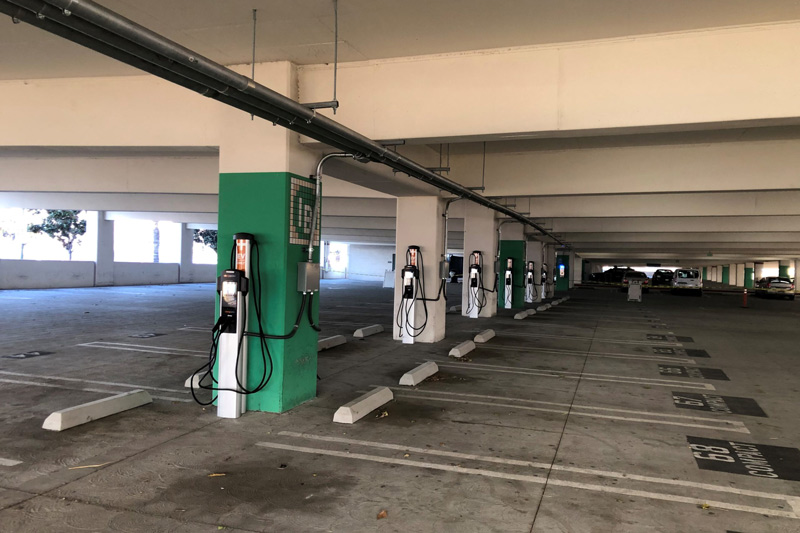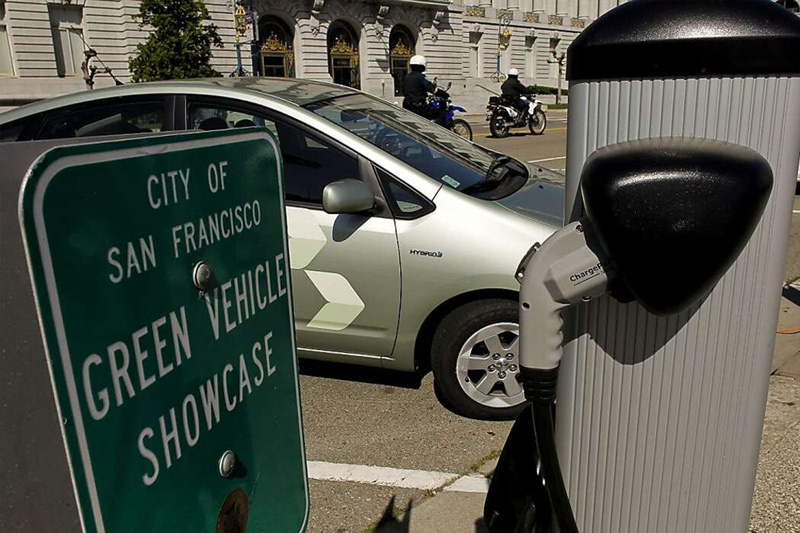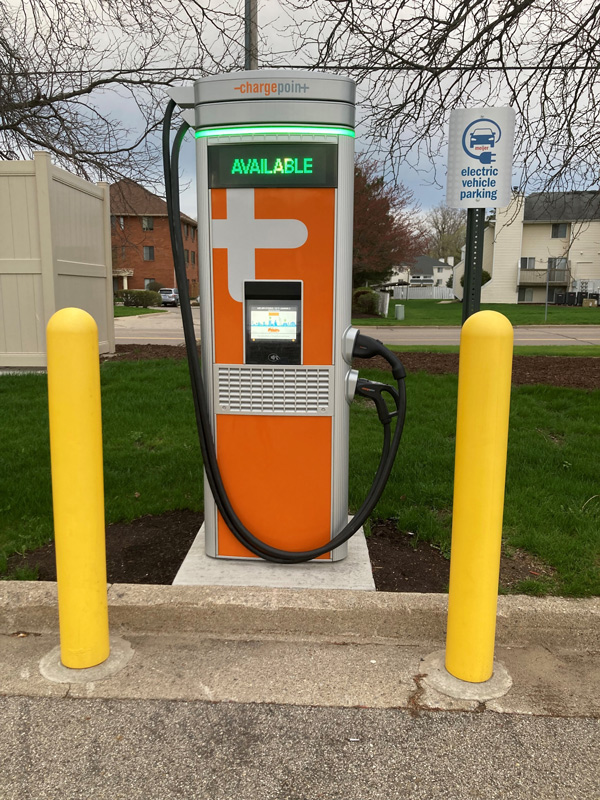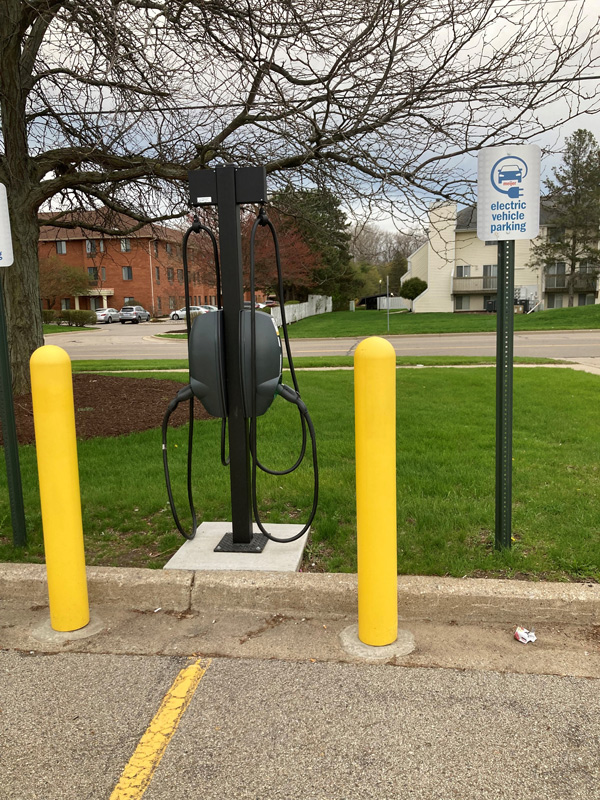
As described in the last newsletter, electric vehicles (EVs) have many benefits and therefore are increasing in popularity throughout the U.S. and world. Updates to our transportation infrastructure are needed to keep up with the increasingly widespread use of EVs. This newsletter will focus on charging stations and resources to support a cleaner transportation portfolio for communities.
Types of EV Chargers
According to the US Department of Energy, consumers and businesses with fleet vehicles are increasingly considering plug-in electric vehicles (PEVs). These include plug-in hybrid electric vehicles (PHEVs) and all-electric vehicles (EVs)—all of which need access to charging stations. Most users will charge at home or at fleet facilities, but the availability of charging stations at workplaces and public destinations is a factor in the decision-making process. Making more stations available may help increase visibility and confidence in EVs.
There are three types of EV chargers:
- Level 1 chargers: These chargers use a regular 120-volt outlet, common to most home and commercial plugs. These chargers provide two to five miles of range per one hour of charging. This would result in about 40 miles of range for a vehicle parked overnight. According to the Department of Energy, the cost for this type of charging is between $200-500 (roughly the cost of adding a new outlet to an existing 120-v circuit).
- Level 2 chargers: These chargers use 208/240-volt outlets, which may be used in a residential home or commercial setting. These chargers provide between 18-28 miles of range per one hour of charging and can result in a full charge for a vehicle parked overnight.
- Direct current (DC) fast chargers: These chargers use 208/480-volt outlets and provide rapid charging. They provide about 60 to 80 miles of range per 20 minutes of charging. These are mainly found in heavy traffic corridors.
In general, when provided for users of a site, charging stations are reasonable accessory uses in all zoning districts, particularly when intended for those who live or work on the property. Non-residential properties may also offer charging for visitors of a site and may even charge for this service.
Great Locations for Charging Stations


Does your community have any of these? If so, they may be good places to consider installing EV charging infrastructure.
- Medical and higher-education campuses
- Civic spaces
- Neighborhood centers
- Leisure destinations such as parks, pools, museums, libraries, stadiums
Financing EV Charging Stations

Consumers Energy customers can participate in the PowerMIFleet program to help fleet owners and operators transition to electric vehicles, and reduce costs, maintenance, and emissions. To participate, you must be a Consumers Energy electric customer, own or lease the property and at least one EV, and provide data related to charger use. Consumers Energy pays for, owns, and maintains all electric infrastructure, and will upgrade or construct new infrastructure as needed, making it easy for anyone to participate. The program also provides rebates on chargers, including up to $5,000 per Level 2 Charge Port, and $35,00 and $70,000 per non-public and public-use DC Fast Charger, respectively.

The Climate Mayors, a network of majors committed to adopting, honoring, and upholding the goals of the Paris Climate Agreement, have a Vehicle Purchasing Collaborative. Mayors involved in the collaborative leverage their collective buying power to accelerate the conversion of public fleets to EVs, resulting in equal access to competitive pricing for EVs and charging infrastructure, financing, best practices, and other supports. The Collaborative currently has a membership of 250 fleets, and is a turnkey, all-inclusive online procurement portal.
EV charging stations may be a good item to include in your community’s annual Capital Improvement Plan (CIP). Including it here will allow for short- to mid-term planning for implementation, require the identification of funds for the stations (grants, matches, or budget items), and signal that transitioning to clean modes of transportation is a priority. The City of Clawson recently completed their CIP, which included plans for the installation of two level 2 charging stations sometime in the next 6 years. The Inflation Reduction Act of 2022 extended the federal tax credit for charging stations. For individual/residential uses, the tax credit is 30%, for up to $1,000. The tax credit is 6% with a maximum credit of $100,000 per charging unit for commercial uses. Commercial equipment purchased with these credits must be placed in a low-income community or non-urban area.
Giffels Webster News
Giffels Webster presented two workshops at the Michigan Association of Planning Conference. We presented two sessions at this year’s conference on Mackinac Island. Jill Bahm co-presented Ethics and Equity in Planning, The following day, Jill Bahm, Sri Komaragiri, Eric Pietsch, and Joe Tangari presented on Future-Proofing Your Planning and Zoning Department. If you missed us up north but are curious about our sessions, feel free to reach out and we would be happy to talk more!
Welcome to our two new planners! We are excited to welcome two new senior planners, Julia Upfal, AICP and Andy Aamodt, to our team. Both Julia and Andy bring great planning expertise to enhance our team and we’re happy to have them on board. Please say hello if you see them!


For more information, please contact Giffels Webster at 866.271.9663. www.giffelswebster.com



